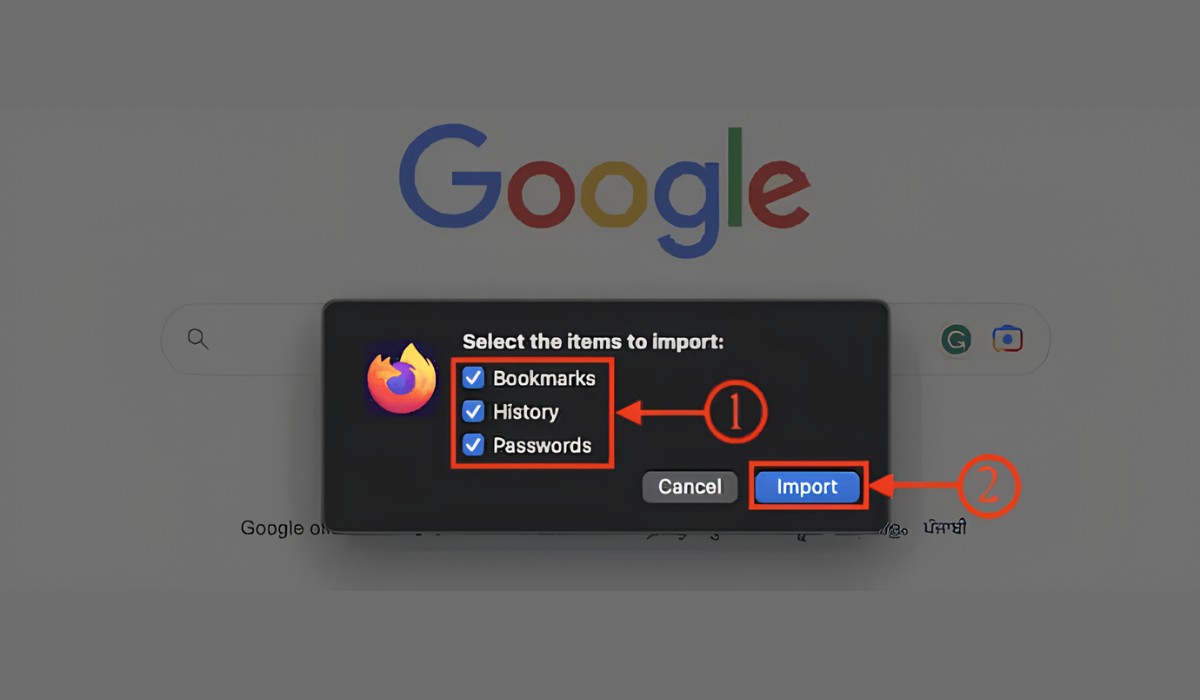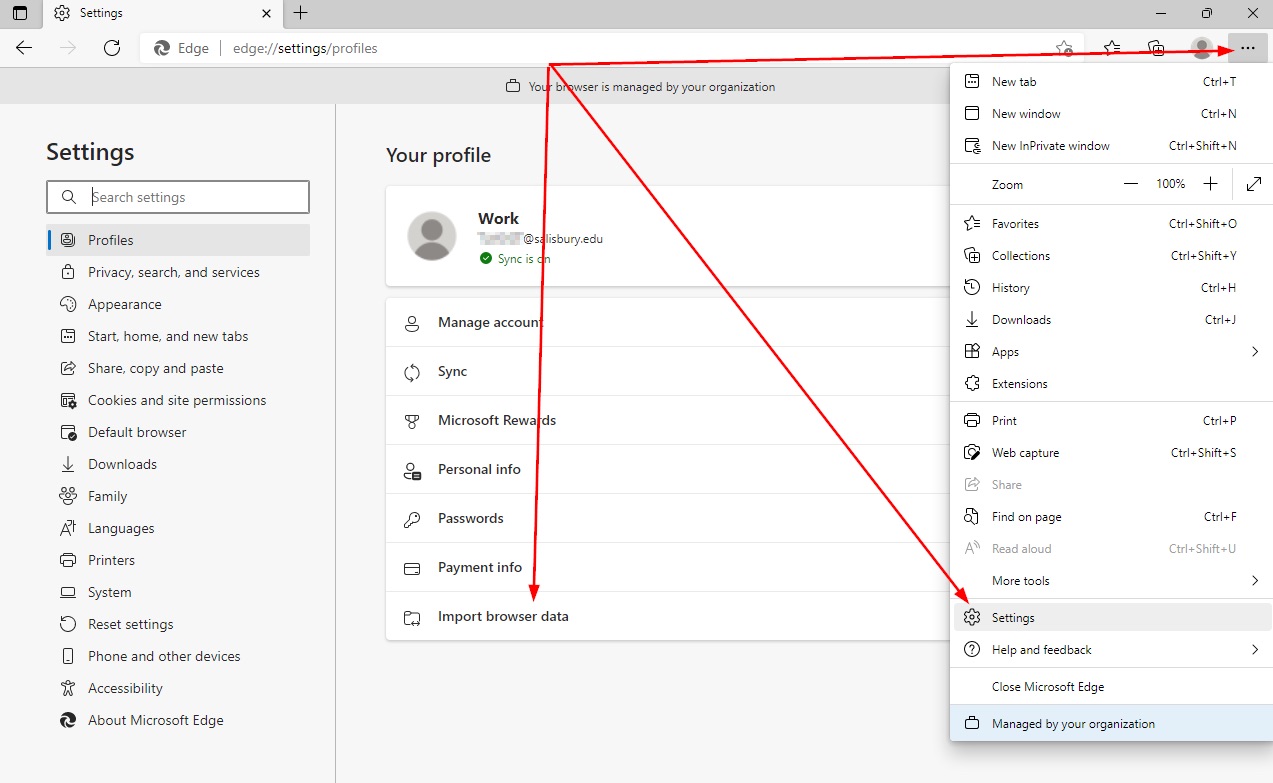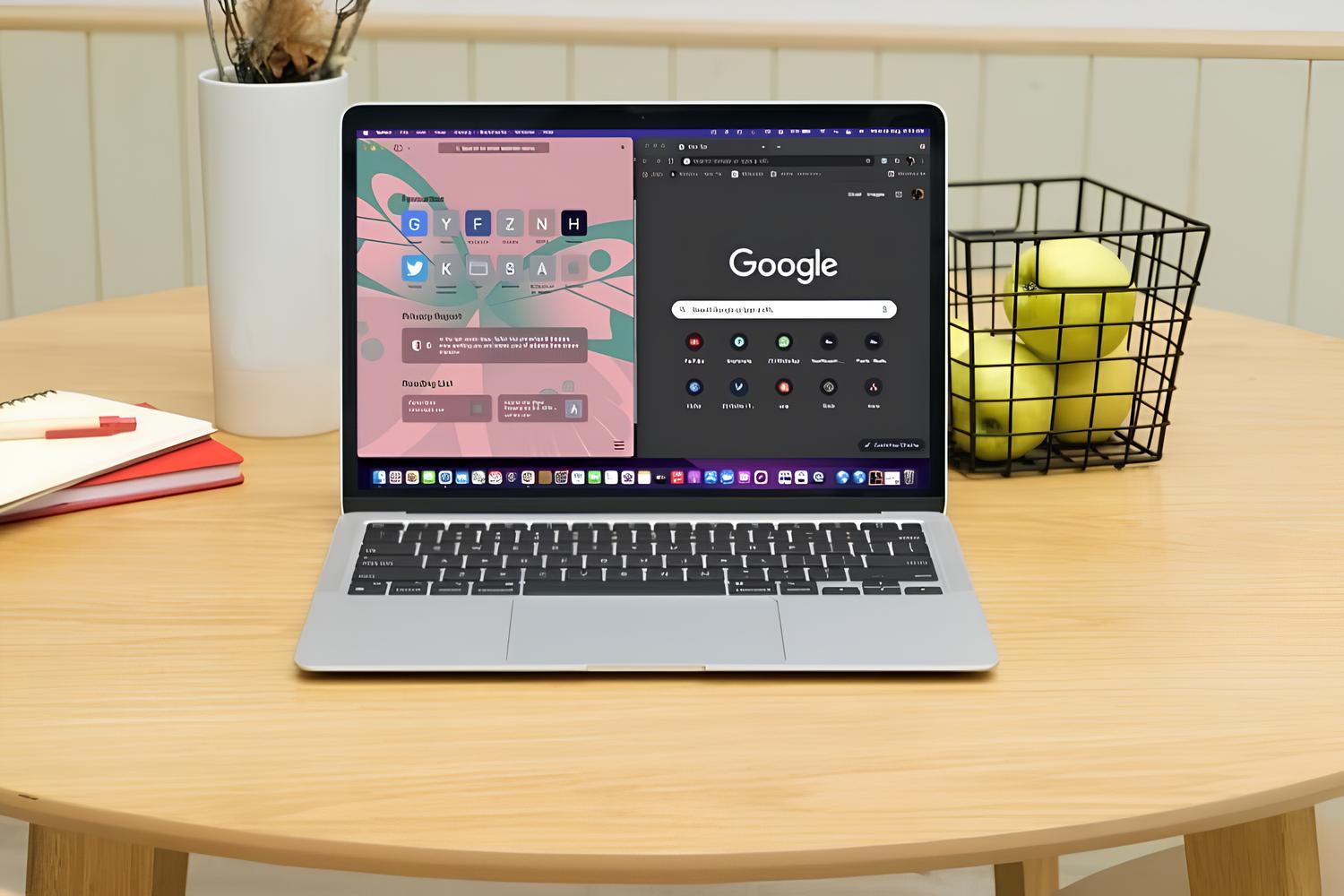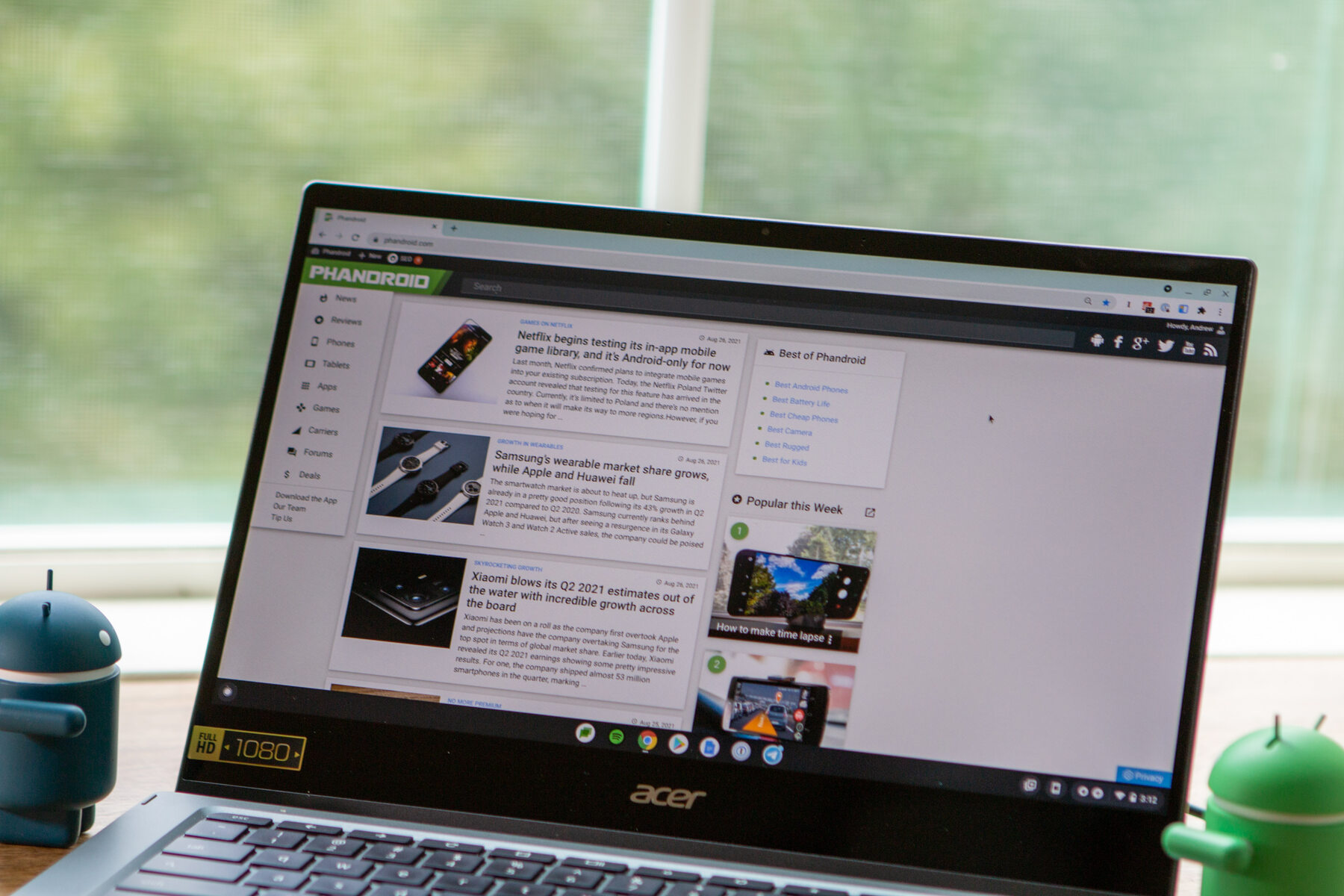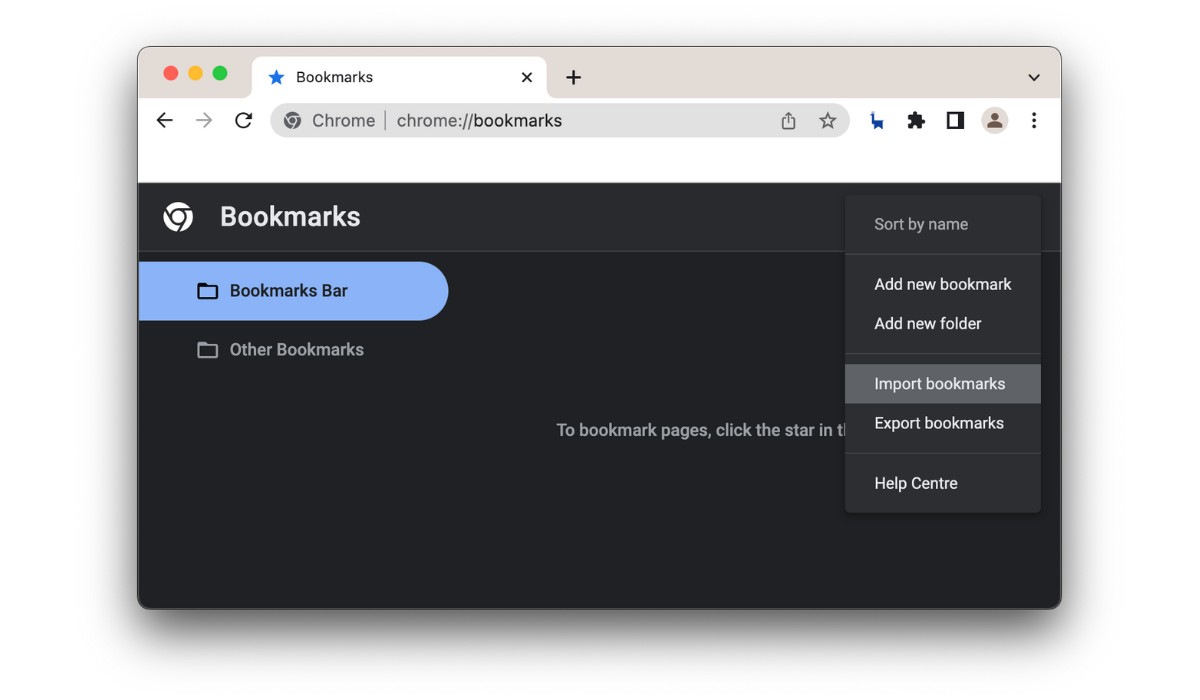Introduction
Transferring your Chrome bookmarks to another computer is a common need for many users. Whether you've purchased a new computer, switched to a different device, or simply want to keep your bookmarks synchronized across multiple devices, knowing how to transfer your Chrome bookmarks can save you time and effort. Fortunately, there are several methods available to accomplish this task, each with its own advantages and considerations.
In this article, we will explore two effective methods for transferring your Chrome bookmarks to another computer. The first method involves using the built-in Google Account sync feature, which seamlessly transfers your bookmarks across devices. The second method entails exporting your bookmarks as a file and then importing them into the Chrome browser on your new computer. Both methods are straightforward and can be easily executed by users with varying levels of technical expertise.
By following the steps outlined in this article, you can ensure that your carefully curated collection of bookmarks, including favorite websites, research materials, and resources, remains accessible and organized on your new computer. Whether you're a casual internet user or a professional who relies on specific bookmarks for work, the ability to transfer your Chrome bookmarks efficiently is a valuable skill that can streamline your digital experience. Let's delve into the methods and get your bookmarks seamlessly transferred to your new computer.
Method 1: Using Google Account Sync
One of the most convenient and efficient ways to transfer your Chrome bookmarks to another computer is by utilizing the Google Account sync feature. This method leverages the seamless integration between Chrome and your Google Account, allowing you to synchronize your bookmarks across multiple devices effortlessly. Here's a step-by-step guide to using Google Account sync for transferring your bookmarks:
-
Ensure Chrome Sync is Enabled: Before initiating the transfer process, ensure that Chrome Sync is enabled on your current computer. To do this, open Chrome and click on the profile icon in the top-right corner. Select "Turn on sync" if it's not already enabled. This action will sync your bookmarks, browsing history, passwords, and other settings to your Google Account.
-
Sign in to Chrome on the New Computer: On your new computer, open Chrome and sign in with the same Google Account that you used to enable Chrome Sync on your previous device. This will trigger the synchronization process, pulling in all the data, including your bookmarks, from your Google Account to the new computer.
-
Verify Bookmark Synchronization: Once signed in, navigate to the bookmarks bar or the bookmarks manager to ensure that your bookmarks have been successfully transferred. You should see all your bookmarks from the previous computer neatly organized and accessible on the new device.
By following these simple steps, you can seamlessly transfer your Chrome bookmarks to another computer using the power of Google Account sync. This method not only saves time and effort but also ensures that your bookmarks remain up to date across all your devices. Whether you're switching to a new computer or simply want to access your bookmarks on multiple devices, Google Account sync provides a hassle-free solution for keeping your browsing experience consistent and personalized.
In addition to transferring bookmarks, Chrome Sync also synchronizes other browsing data, such as open tabs, saved passwords, and browsing history, making it a comprehensive tool for maintaining a cohesive browsing experience across devices. This level of synchronization is particularly beneficial for users who rely on multiple devices for work, study, or leisure, as it eliminates the need to manually manage and update bookmarks on each individual device.
Overall, leveraging Google Account sync to transfer your Chrome bookmarks offers a seamless and reliable solution that aligns with the interconnected nature of modern digital lifestyles. With this method, you can effortlessly maintain a consistent browsing environment across all your devices, ensuring that your bookmarks are readily available whenever and wherever you need them.
Method 2: Exporting and Importing Bookmarks File
Another effective method for transferring your Chrome bookmarks to another computer involves exporting and importing a bookmarks file. This approach is particularly useful if you prefer a manual transfer process or if you need to share your bookmarks with someone else. By exporting your bookmarks as a file and then importing them into the Chrome browser on your new computer, you can maintain full control over the transfer and ensure that your bookmarks are seamlessly replicated on the new device.
Here's a detailed guide on how to execute the exporting and importing process for your Chrome bookmarks:
-
Exporting Bookmarks from Chrome:
- Open the Chrome browser on your current computer and click on the three-dot menu icon in the top-right corner.
- Navigate to "Bookmarks" > "Bookmark Manager." Alternatively, you can use the shortcut "Ctrl + Shift + O" (Windows/Linux) or "Command + Option + B" (Mac) to access the bookmark manager directly.
- In the bookmark manager, click on the three-dot menu icon again and select "Export bookmarks."
- Choose a location on your computer to save the exported bookmarks file and click "Save."
-
Importing Bookmarks to Chrome on the New Computer:
- Transfer the exported bookmarks file to your new computer using a USB drive, cloud storage, or any other preferred method.
- Open the Chrome browser on your new computer and access the bookmark manager using the same method as in the first step.
- Once in the bookmark manager, click on the three-dot menu icon and select "Import bookmarks."
- Navigate to the location where you saved the exported bookmarks file, select the file, and click "Open."
By following these steps, you can effectively export your Chrome bookmarks from one computer and import them into the Chrome browser on another computer. This method provides a straightforward way to manually transfer your bookmarks, making it ideal for users who prefer a hands-on approach to managing their browsing data.
The exporting and importing process also allows for flexibility in sharing bookmarks with others, as you can easily send the exported bookmarks file to colleagues, friends, or family members who may benefit from accessing the same set of bookmarks. Additionally, this method serves as a reliable backup strategy, enabling you to create a local copy of your bookmarks that can be restored in the event of data loss or browser reinstallation.
Overall, the exporting and importing method offers a practical and customizable approach to transferring Chrome bookmarks, catering to users who seek a more hands-on and controlled transfer process. Whether you're migrating to a new computer, sharing bookmarks with others, or safeguarding your browsing data, this method empowers you to manage your bookmarks with precision and convenience.
Conclusion
In conclusion, the ability to transfer Chrome bookmarks to another computer is a valuable skill that empowers users to maintain a seamless and personalized browsing experience across multiple devices. Whether you opt for the convenience of Google Account sync or the hands-on approach of exporting and importing bookmarks, the end goal remains the same: ensuring that your carefully curated collection of bookmarks is readily accessible on your new computer.
By leveraging Google Account sync, users can effortlessly synchronize their bookmarks, browsing history, passwords, and other settings across devices, eliminating the need for manual transfer processes. This method not only saves time and effort but also promotes consistency and continuity in the digital browsing environment. The interconnected nature of modern lifestyles, where individuals rely on multiple devices for work, study, and leisure, makes Google Account sync a valuable tool for streamlining the browsing experience.
On the other hand, the exporting and importing method offers a more hands-on and customizable approach to transferring bookmarks. This method is particularly useful for users who prefer a manual transfer process, wish to share bookmarks with others, or seek to create local backups of their browsing data. The flexibility and control provided by this method cater to diverse user preferences, allowing individuals to manage their bookmarks with precision and convenience.
Ultimately, the choice between Google Account sync and exporting/importing bookmarks depends on individual preferences, specific use cases, and the level of control desired over the transfer process. Both methods offer effective solutions for ensuring that your bookmarks seamlessly transition to your new computer, allowing you to pick up where you left off in terms of accessing favorite websites, essential resources, and personalized browsing environments.
Regardless of the method chosen, the overarching goal is to simplify the process of transferring Chrome bookmarks while maintaining the integrity and organization of your browsing data. Whether you're upgrading to a new computer, transitioning to a different device, or simply seeking to keep your bookmarks synchronized, the methods outlined in this article provide practical and efficient means to achieve your transfer goals.
In the ever-evolving landscape of digital connectivity, the ability to seamlessly transfer Chrome bookmarks to another computer reflects the adaptability and convenience that users expect in managing their online experiences. By staying informed and empowered with the knowledge of these transfer methods, users can ensure that their browsing environments remain personalized, organized, and accessible across all their devices.









